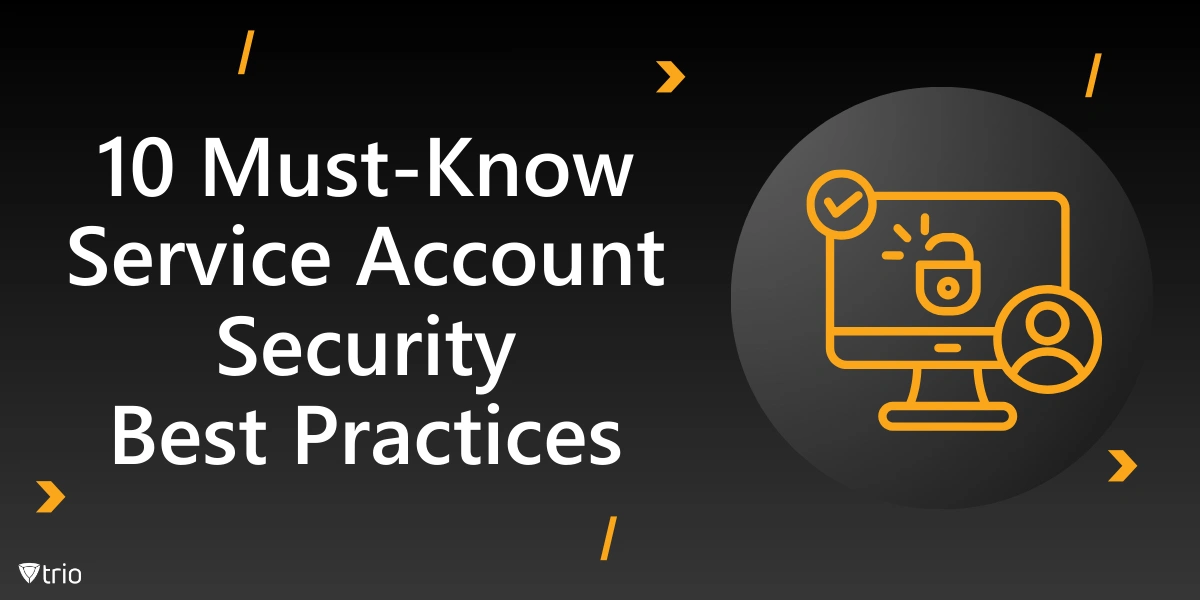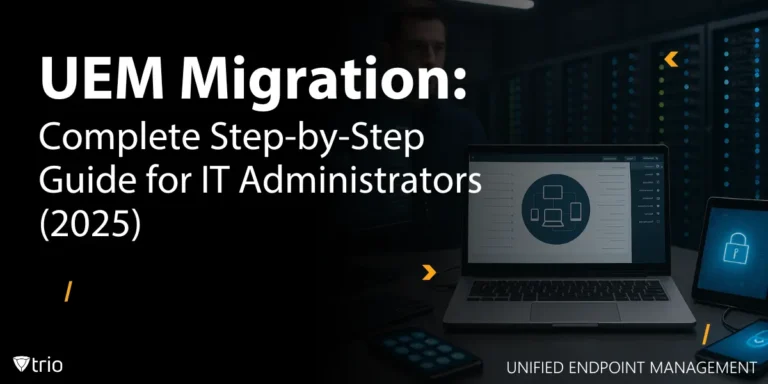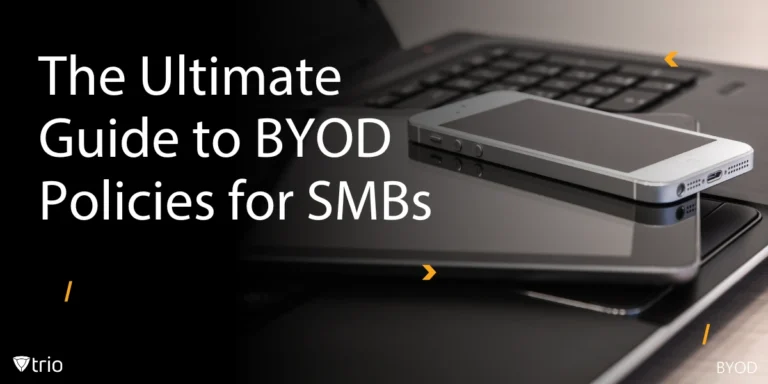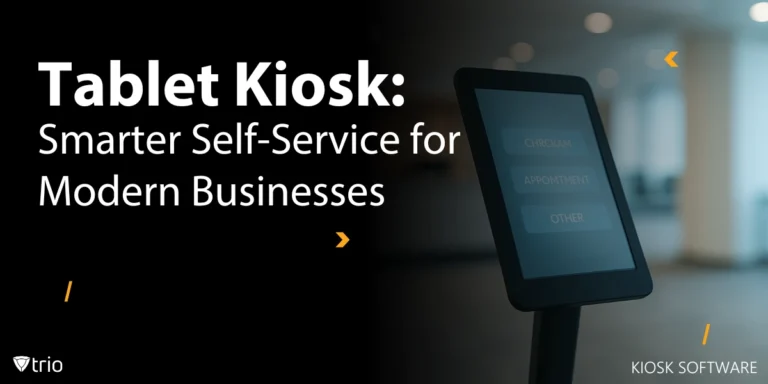Service accounts are the unsung heroes, handling automated tasks and system processes. There are various types of service accounts, such as system-managed and user-managed accounts. For instance, a database service account might handle data queries, while a backup service account ensures your files are safely stored. These accounts are essential to maintaining the seamless operation of various services, often performing repetitive tasks without human intervention.
Ignoring service account security can open the floodgates to company data breaches. These accounts often have elevated privileges, making them prime targets for cyber attackers. A single compromised service account can lead to unauthorized access, data theft, and significant financial losses for your organization. Additionally, the difficulty in tracking their usage can lead to undetected breaches for prolonged periods.
This guide aims to equip IT admins with strategies to secure service accounts. By following these best practices, you'll enhance your organization's security posture and protect critical systems. These are the top ten methods to protect your service accounts and keep your operations running smoothly.
1. Inventory and Document All Service Accounts
Start by listing every service account within your environment. This comprehensive inventory helps you understand the scope and purpose of each account. Without a complete list, it's easy for accounts to slip through the cracks, increasing vulnerability. Make sure to include key details such as account purpose, associated systems, and access levels. This will help you understand which accounts are critical and need special attention.
Regular updates ensure that any changes, like new accounts or modified permissions, are recorded. Outdated records can lead to oversight, leaving gaps in your security defenses. Documentation should not be a one-time activity but a living document that reflects real-time changes within the environment. Establishing a process for keeping this information current is just as important as creating it in the first place.
2. Apply the Principle of Least Privilege
Adopting the least privilege access model means granting service accounts only the permissions they absolutely need. This approach minimizes potential damage if an account is compromised. By restricting access, you reduce the risk of unauthorized actions within your systems. According to Solutions Review, 80% of security breaches happen because of privileged credentials. In addition, defining clear boundaries for each account’s privileges allows you to mitigate the risk of misuse, intentional or otherwise.
Conduct periodic reviews of account privileges to ensure they remain appropriate. Over time, roles and responsibilities can change, so previous permissions become obsolete. Regular audits help maintain the integrity of your security measures. Document the audit process and results so that any necessary adjustments can be tracked and verified.
3. Enforce Strong, Unique Passwords
Default passwords are a hacker’s playground. Always change them immediately to something unique and complex. Using default credentials is like leaving your front door wide open—don’t make that mistake. It’s best practice to replace these defaults even before accounts are operational to ensure no window of vulnerability exists. Additionally, ensure the team is trained on why default credentials are so dangerous and enforce strict policies to eliminate their use entirely.
Adhere to service account password best practices by creating strong, unique passwords. Incorporate a mix of letters, numbers, and special characters to enhance security. Good passwords are your first line of defense to prevent brute force attacks. Implementing password generators and enforcing mandatory password updates can further improve your security. Ensure users understand the rationale behind these policies so that compliance becomes second nature rather than an inconvenience.

4. Regularly Rotate Credentials
Enforcing regular password changes reduces the window of opportunity for attackers. Password expiration policies ensure that even if a password is compromised, it won’t be usable for long. It’s a simple step that significantly boosts your security. Regularly changing credentials also forces periodic evaluations of the account's continued need and provides an opportunity to disable or decommission unnecessary accounts.
Manual password rotation is tedious and error-prone. Automated password management tools make the process smoother. These tools save time while enhancing your security posture. Automation also allows you to adhere strictly to rotation schedules without depending on human consistency. This approach reduces the likelihood of skipped updates and guarantees compliance with industry standards.
5. Implement Multi-Factor Authentication (MFA)
Different types of multi-factor authentication, such as SMS codes or authenticator apps, add an extra layer of security. MFA ensures that even if a password is stolen, unauthorized access is still thwarted. This added security measure often stops attackers dead in their tracks, reducing the risk of credential-based breaches. Use MFA especially on accounts with administrative privileges to ensure the strongest level of protection.
Integrate MFA with your existing systems by choosing methods that suit your infrastructure. Start with high-privilege accounts and gradually extend to others. Proper implementation leads to security without disrupting operations. MFA implementation should be planned carefully to result in compatibility, and users should be educated on how to use it effectively, thereby minimizing friction and maximizing adoption.
6. Disable Interactive Logins for Service Accounts
Configure service accounts to prevent direct user logins. This restriction makes sure that these accounts are used solely for their intended automated tasks. Limiting login capabilities reduces the attack surface. It is important to use tools that enforce this policy across all managed accounts so that no unauthorized interactive access can be granted by mistake or oversight.
By disabling interactive logins, you minimize the chances of unauthorized access through these accounts. It’s a good measure that significantly lowers potential attack vectors and protects your systems effectively. This action also reduces the risk of misuse by internal actors who might use these accounts inappropriately, thus contributing to a more secure and well-regulated access environment.
7. Monitor and Audit Service Account Activities
Deploy monitoring tools to keep an eye on service account activities in real-time. These tools can detect unusual behavior and alert you to potential threats. Continuous monitoring is key to early threat detection. It is also helpful to categorize alerts based on severity so that critical actions can get the immediate attention they deserve while low-priority events are reviewed systematically.
Analyzing logs and reports is required for assessing cybersecurity metrics. Regular reviews help identify suspicious activities and patterns that could indicate a security breach. Staying vigilant helps you stay ahead of threats. Develop a schedule for log reviews and assign responsibilities to specific team members to maintain consistency. Automated analysis tools can also assist in flagging anomalies and make the review process both effective and efficient.
8. Utilize Managed Service Accounts (MSAs)
Managed Service Accounts (MSAs) offer enhanced security within Active Directory environments. They automatically handle password management, so they can reduce the risk of human error. MSAs streamline account management while boosting security. They also simplify administrative overhead, allowing IT staff to focus on more strategic tasks rather than routine password updates.
Deploy MSAs by following Active Directory service account security best practices. Ensure proper configuration and integration with your systems for optimal performance. Effective implementation maximizes the benefits of MSAs. Make sure to regularly evaluate whether MSAs are adequately fulfilling your security needs, and adjust configurations as your infrastructure and requirements evolve.
9. Segregate Service Accounts by Function
Assign distinct accounts for each service to limit risk. Segregation establishes that a compromise in one account doesn’t affect others. It compartmentalizes access and enhances overall security. This practice also simplifies tracking activities back to specific services, which aids both in debugging and in security incident response, should the need arise.
By segregating service accounts, you contain potential breaches to specific areas. This containment prevents attackers from gaining widespread access. This approach protects your entire network from extensive damage. Segregation is not only beneficial for mitigating risk but also helps identify the root cause faster, enabling a quicker and more targeted response to incidents.
10. Regularly Review and Decommission Unused Accounts
Regularly audit your accounts to spot and disable those that are no longer in use. Unused accounts are prime targets for attackers since they often have outdated permissions. Removing them tightens your security. Automating this process can further warrant that dormant accounts are consistently identified and disabled before they can become security liabilities.
Keeping a minimal number of active accounts reduces vulnerability. A lean inventory means better control and easier management of your service accounts. It’s a straightforward way to enhance security. Regular reviews also allow you to reassess whether the active accounts are being used efficiently or if further consolidation can improve both security and operational efficiency.

Trio: Streamline Security With Our MDM Solutions
Managing service account security can be a daunting task, but Trio’s MDM solutions make it easier. By integrating mobile device management with our security features, Trio helps protect your service accounts across all devices. Trio’s MDM system also provides centralized control, making oversight and management far less cumbersome. Ready to elevate your security game? Try our free demo today and see how Trio can protect your organization effortlessly.
Trio’s capabilities extend beyond basic device management. Our platform allows for seamless integration with existing IT frameworks, automating routine tasks such as credential rotation and compliance checks. By reducing manual intervention, Trio helps cut down on human errors while ensuring that best practices for service account security are consistently applied across all devices and services.
Conclusion: Importance of Proactive Security Measures
Securing service accounts is non-negotiable in today’s threat landscape. Implementing these best practices ensures your critical systems remain protected against evolving threats. Don’t wait for a breach to act—stay ahead with strong security measures. A proactive approach not only reduces risk but also contributes to more efficient and manageable IT operations, allowing your team to focus on innovation.
Start by assessing your current service account security and identifying areas for improvement. Implement these best practices step-by-step, and continually update your protocols to address new challenges. Taking action today safeguards your organization’s future. Remember, securing service accounts is a continual process, not a one-off task—staying informed and adapting to changes is key to staying secure.
By following these 10 best practices, IT administrators can significantly enhance the security of service accounts, keeping critical systems and data safe from potential threats.
Get Ahead of the Curve
Every organization today needs a solution to automate time-consuming tasks and strengthen security.
Without the right tools, manual processes drain resources and leave gaps in protection. Trio MDM is designed to solve this problem, automating key tasks, boosting security, and ensuring compliance with ease.
Don't let inefficiencies hold you back. Learn how Trio MDM can revolutionize your IT operations or request a free trial today!





